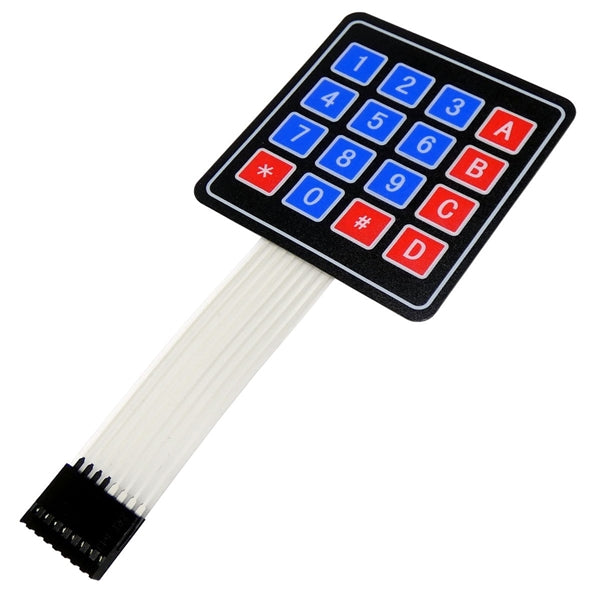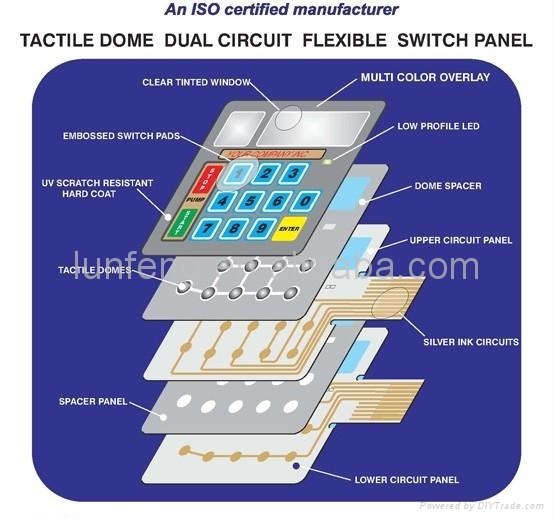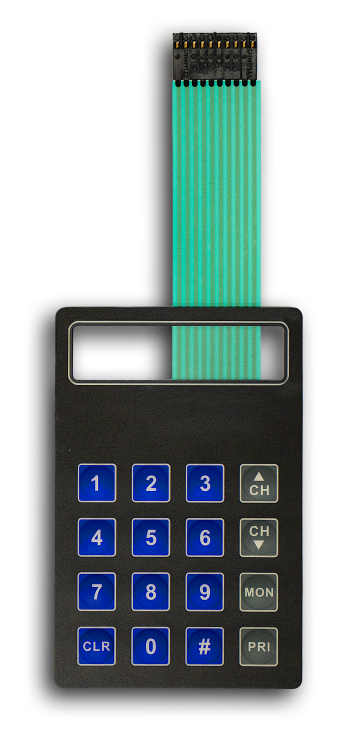A Comprehensive Guide to Membrane Switches for Product Designers
A Comprehensive Guide to Membrane Switches for Product Designers
Blog Article
Comprehending the Significance of Membrane Switches in Customer User Interfaces
Membrane buttons are essential elements in the style of effective individual interfaces, assisting in not only functionality but also enhancing visual allure and individual interaction. As we check out the various advantages and future fads connected with Membrane innovation, it becomes clear that these buttons are a lot more than simply parts; they represent a merging of development and practicality.
What Are Membrane Buttons?

The spacer layer, which consists of sticky residential properties, permits the splitting up of the circuit layer from the overlay, making certain that the button stays in a non-activated state up until pressed. When stress is put on the overlay, it presses the spacer layer, linking the gap and completing the circuit in the underlying layer. This style not only lowers the physical room needed for conventional mechanical buttons however likewise boosts the toughness of the gadget, as Membrane buttons are typically resistant to dust, dampness, and other environmental factors.
Generally discovered in applications ranging from customer electronic devices to clinical gadgets, Membrane buttons are essential to modern-day innovation, offering a user-friendly and reliable user interface that lines up with modern design needs.
Benefits of Membrane Switches
While numerous button modern technologies exist, Membrane Switches offer distinct benefits that make them particularly preferable in different applications. Among the primary benefits of Membrane buttons is their small layout, which permits space-saving applications in gadgets where real estate is limited. Their thin account not only improves visual appeal however also helps with lightweight construction.
One more substantial advantage is their resistance to environmental aspects. Membrane switches are commonly sealed versus dampness, dust, and pollutants, making them excellent for usage in demanding environments, such as clinical devices and industrial equipment. This resilience expands the lifespan of the switch, lowering upkeep expenses and boosting reliability.
Moreover, Membrane buttons can be customized to satisfy particular style demands, integrating one-of-a-kind graphics and shades that enhance customer interaction. Their responsive comments alternatives can additionally be tailored to supply a satisfying user experience. Additionally, Membrane buttons are cost-effective, especially in high-volume applications, as they can be generated effectively.
Applications in Numerous Industries

In the customer electronic devices market, Membrane switches are widespread in gadgets such as microwaves, washing equipments, and remotes. Their responsive feedback and visual alternatives boost customer experience while providing a smooth, contemporary look. Furthermore, vehicle suppliers make use of Membrane switches in dashboard controls and infotainment systems, where space is limited, and user interaction is vital.
Additionally, the commercial market leverages Membrane buttons in control panels for equipment and devices, allowing for instinctive operation in commonly rough environments. Their resistance to chemicals and dampness makes sure durability and dependability in these applications. Generally, the versatility of Membrane Switches contributes considerably to their prevalent usage, making them important in different technological domains.
Layout Factors To Consider for Membrane Switches

When creating Membrane buttons, several vital factors to consider should be taken into consideration to make certain optimum capability and user experience. First of all, the option of products is critical; selecting durable, high-grade substratums can enhance the button's durability and resistance to environmental aspects such as wetness and temperature level changes.
Second of all, the design of the visuals overlay ought to focus on clarity and simplicity of usage. Icons and text need to be clear, and the design should promote instinctive anonymous communication (membrane switches). Additionally, tactile comments is necessary; incorporating a responsive dome or various other devices can enhance the individual experience by offering physical verification of activation
One more essential variable is the button's electric efficiency. Developers must guarantee that the conductive traces are appropriately designed to reduce resistance and stay clear of signal disturbance. This entails assessing the needed actuation pressure and making sure compatibility with the electronic components they will user interface with.

Future Patterns in Membrane Innovation
As technology remains to advance, Membrane buttons are positioned to advance significantly, driven by innovations in products and producing techniques. One emerging pattern is the unification of sophisticated products, such as adaptable substratums and conductive inks, which boost durability and decrease look at this site the overall weight of Membrane switches. These materials not only improve the tactile reaction however additionally permit the design of switches that can stand up to harsher ecological conditions.
Moreover, the assimilation of touch-sensitive innovations is changing conventional Membrane Switches into even more interactive interface. Capacitive touch sensors embedded within Membrane switch panels can offer a much more responsive and user-friendly user experience, straightening with the expanding demand for smooth, contemporary styles in customer electronic devices.
In addition, innovations in printing strategies, such as electronic and 3D printing, make it possible for quick prototyping and modification of Membrane buttons. This versatility enables suppliers to react a lot more rapidly to market demands and customer preferences.
Lastly, sustainability is becoming a significant focus, with suppliers discovering green products and procedures. As these trends unravel, the future of Membrane technology guarantees boosted functionality, visual charm, and environmental duty, solidifying their duty in innovative interface across various sectors.
Conclusion
In conclusion, Membrane Switches stand for an essential component in the design of interface, incorporating capability with aesthetic adaptability. Their advantages, including toughness and resistance to ecological factors, make them suitable for diverse applications across numerous markets. Thoughtful design factors to consider improve user interaction and experience. As advancements in technology proceed, the advancement of Membrane buttons is expected to additional improve interface, driving development and enhancing functionality in an increasingly complex technical landscape.
Membrane buttons are essential parts in the design of efficient customer interfaces, facilitating not only performance yet also improving visual appeal and individual communication.Membrane Switches offer as an important element in numerous customer interfaces, facilitating a seamless interaction in between customers and digital tools.While numerous switch technologies exist, Membrane Switches offer unique benefits that make them specifically preferable in numerous applications.In addition, Membrane switches can be personalized to meet particular style demands, integrating special graphics and shades that boost customer interaction.In conclusion, Membrane Switches represent an important element in the layout of user interfaces, combining capability with aesthetic adaptability.
Report this page